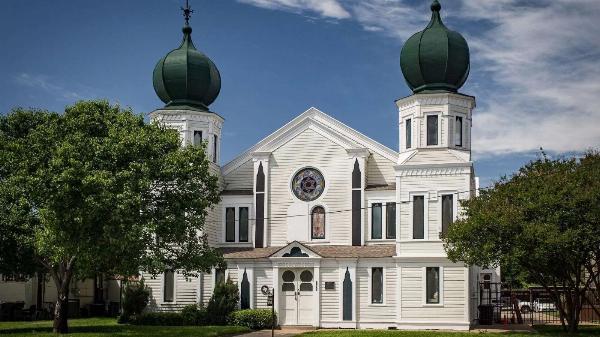 Explosive Keyword Research – Target Buyers, Not Just Traffic!
Explosive Keyword Research – Target Buyers, Not Just Traffic!
The Fascinating World of Folklore Stories: History and Significance
Written by Akash » Updated on: June 17th, 2025

Folklore is an essential part of human culture, connecting generations through stories, traditions, and beliefs passed down orally. These stories often reflect the values, fears, dreams, and experiences of a particular community. Folklore stories are not just simple tales but intricate narratives that hold deep cultural, moral, and social meanings. From legends of gods and heroes to fairy tales, mythological creatures, and urban legends, folklore encompasses an incredible range of subjects, each offering a unique perspective on human life.
In this article, we will explore the history of folklore, the role it has played in shaping societies, and the diverse types of folklore stories that continue to thrive in various cultures worldwide.
What is Folklore?
At its core, folklore refers to the collective traditions, myths, legends, customs, and practices of a group of people, typically passed down through generations by word of mouth. It includes stories, beliefs, proverbs, rituals, jokes, songs, and even traditional knowledge about plants, animals, and the environment. Folklore is often regarded as the "unwritten" history of a community and serves as an important means of preserving its cultural identity.
The term folklore was first coined in the 19th century by the English antiquarian William Thoms, but the practice of sharing stories orally has existed long before this. In many ways, folklore serves as a means of passing on wisdom and teaching moral lessons in a manner that is both engaging and memorable.
The History of Folklore: An Ancient Tradition
The history of folklore is as old as humanity itself. It predates written language, with early forms of folklore originating in prehistoric times when humans relied on oral traditions to communicate and preserve their cultural practices. As early societies formed, people began to use stories to explain the mysteries of nature, to provide entertainment, and to teach important lessons about life, death, morality, and survival.
Prehistoric Folklore: The earliest folklore stories were likely rooted in the survival experiences of early humans. These stories often centered on themes like the creation of the world, the forces of nature, and the spirits of animals and ancestors. Prehistoric cave art, for example, offers glimpses into the symbolic storytelling traditions that might have formed part of early human folklore.
Ancient Civilizations: As civilizations began to emerge in the ancient world, so did the development of more complex forms of folklore. The mythologies of ancient Greece, Egypt, Mesopotamia, and India are rich with stories about gods, heroes, and the forces of nature, which served to explain everything from the creation of the universe to natural disasters. These mythologies were deeply intertwined with religious beliefs and formed the foundation for many cultural norms.
In ancient India, for example, the Vedas and Upanishads are spiritual texts that incorporate elements of folklore. The Mahabharata and the Ramayana, epic tales of heroism, morality, and divine intervention, are considered part of India’s folklore tradition. Similarly, in Greek mythology, stories about gods like Zeus, Hera, and Athena served both as entertainment and as moral guides, teaching lessons about justice, hubris, and respect for the gods.
Medieval Folklore: With the fall of the Roman Empire and the rise of medieval kingdoms, folklore evolved to reflect the social structures, beliefs, and traditions of medieval Europe. The Arthurian legends, for example, which involve King Arthur, the Knights of the Round Table, and magical figures like Merlin, are part of medieval folklore. These stories were told to inspire heroism, chivalry, and honor, and became foundational to European cultural identity.
In many parts of the world, folklore stories during this time also took on a darker tone, with tales of witches, ghosts, and supernatural beings becoming prominent. The Brothers Grimm, German scholars in the 19th century, collected and published many of the most well-known European fairy tales, such as Cinderella, Hansel and Gretel, and Snow White, which were passed down orally for generations.
Types of Folklore Stories
1. Myths
Myths are perhaps the most ancient form of folklore. These stories often explain the origins of the world, natural phenomena, or the relationship between humans and the divine. They usually involve gods, deities, or superhuman beings who interact with the natural world in significant ways. Examples of myths include the Greek myths of gods like Zeus, Hera, and Poseidon, or the Hindu myths surrounding deities like Vishnu and Shiva.
2. Legends
Legends are similar to myths but are often based on real historical events or figures. While myths explain the supernatural, legends may focus on human heroes who perform extraordinary deeds. The Legend of King Arthur or Robin Hood are classic examples of legends that have persisted through generations, blending history with folklore.
3. Folktales
Folktales are stories passed down through generations, often involving ordinary people and magical or fantastical events. These stories are usually intended to teach moral lessons. Famous folktales include Cinderella, Beauty and the Beast, and Little Red Riding Hood. Folktales can be categorized into different sub-genres, such as fairy tales, animal tales, trickster tales, and more.
4. Fairy Tales
Fairy tales are a type of folktale that often involve magical creatures, talking animals, or fantastical elements. They typically center around a protagonist who overcomes challenges or obstacles, often with the help of magic. Cinderella, Snow White, and The Sleeping Beauty are classic examples of fairy tales that have been passed down through generations.
5. Fables
Fables are short stories, typically featuring animals, that teach moral lessons. The most famous examples are the Aesop’s Fables, such as “The Tortoise and the Hare” or “The Fox and the Grapes.” Fables use animals as characters to illustrate human virtues and flaws.
6. Urban Legends
Urban legends are a more modern form of folklore, typically based on contemporary society. These stories often spread as rumors or cautionary tales. Examples include the legend of the killer in the backseat or the choking Doberman. Urban legends are often passed along through word of mouth, email, or social media.
7. Ghost Stories and Superstitions
Supernatural folklore, including ghost stories, haunted houses, and myths about creatures like vampires and werewolves, are an integral part of folklore traditions worldwide. These stories often reflect societal fears and are used to explain things that can’t be easily understood, such as death, illness, or misfortune.
The Role of Folklore in Society
Folklore plays a crucial role in preserving a community’s cultural identity. Through these stories, customs, and traditions, people learn about their past, their values, and their collective wisdom. Folklore is often used to teach children moral lessons, like the importance of honesty, bravery, and kindness. It is also used to explain natural occurrences, provide comfort in times of loss, and help communities cope with the challenges of life.
In addition to its social and educational functions, folklore helps strengthen community bonds. Festivals, rituals, and storytelling events often revolve around folk traditions, bringing people together to celebrate shared cultural heritage. The telling of folklore stories also keeps cultural practices alive, ensuring that they are passed on to future generations.
The Evolution of Folklore in the Modern World
In today’s fast-paced, digital world, folklore still thrives, albeit in modern forms. While oral storytelling traditions are not as widespread as they once were, folklore has adapted to new mediums, such as books, films, television shows, and the internet. Stories that once existed only as oral traditions are now published in books, and many modern movies draw inspiration from ancient folklore.
Even social media platforms have become spaces for modern-day folklore, with urban legends, creepy pasta stories, and viral myths circulating online. These digital-age stories continue to reflect societal fears, values, and curiosity, much like the traditional folklore of earlier times.
Conclusion
Folklore stories are much more than just tales for entertainment; they are the vessels of cultural history, moral teachings, and shared wisdom. From ancient myths and epic legends to modern-day urban legends, folklore has always played a key role in connecting people to their heritage and to one another. As we continue to adapt to new technologies and societies, folklore will undoubtedly evolve but will remain an important part of our cultural fabric, carrying with it the stories that define who we are.
Note: IndiBlogHub features both user-submitted and editorial content. We do not verify third-party contributions. Read our Disclaimer and Privacy Policyfor details.
Copyright © 2019-2025 IndiBlogHub.com. All rights reserved. Hosted on DigitalOcean for fast, reliable performance.

















